A unique collection of Japanese hand tools
Jay Speetjens explains how these used Japanese carpentry tools came into his care.
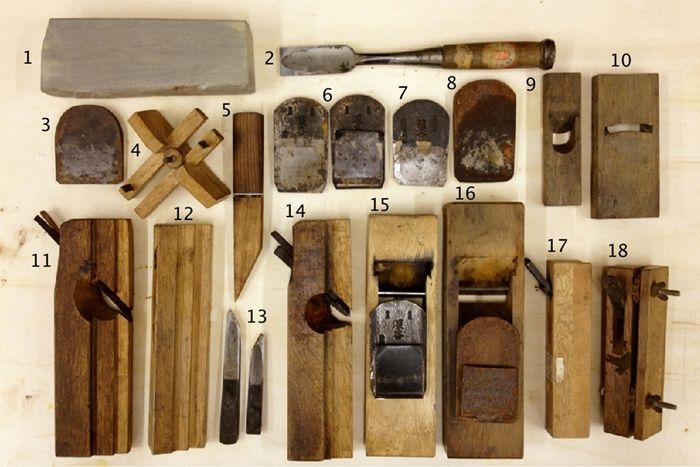
Japanese carpentry tools fresh out of the box after a trip half way around the world and after years of being unused.
The Back Story
What I know about these tools and how they came into my care is not completely clear to me, largely do to my limited Japanese. I think they were first destined to come to me in the summer of 2010 when My aikido teacher, Tanaka Tadamitsu, his traveling companions and some other friends were sitting in an airport restaurant waiting for their flight back to Japan. My teacher asked if I would like a hand plane that had belonged to his father. At first I thought he asked me if I liked Japanese planes, to which I responded with an enthusiastic “yes”. Then I realized what he had actually asked, at which point I back peddled, trying not to sound too eager. He went on to describe how his father owned the plane and shared his bemused lack of understanding as to why his father would posses such a thing, after all he wasn’t a carpenter. I took this to be something like me not owning a stethoscope because I’m not doctor. Anyhow he went on to describe that the wooden dai was no longer good but that the steel probably still was. Our conversation moved on and I presumed that was the end of that.
Sometime latter I received an email from another friend in Japan who has an English language juku and acts as translator and intermediary for our dojo. The message stated that Tanaka sensei wanted to send me something, to which I replied something along the line of “that really isn’t necessary”. No package followed. Last fall one of my students was in Japan on business and was also able to practice some aikido. As he was getting ready to return to the US he sent a message, which said that Tanaka sensei had some chisels for me and that someone would be shipping them the following week. Several weeks went by and no package arrived. I began to be concerned that they may have gotten shipped to an old address. I waited another week or so and then reluctantly sent my friend a query. Almost immediately I received a reply that the package hadn’t been shipped yet. It arrived two days later.
For me there are two salient points here. The first is to be conscientious of what you ask of your Japanese friends, because you will likely get it. And how difficult it can be to communicate across a language barrier and cultural divide. In this case, the fact that plural in Japanese is often only communicated by context lead me to believe initially that my teacher was talking about one plane and later that we were talking about one or perhaps a small set of chisels, but not a heavy box full of a variety of woodworking tools.
Photo number 1: Tool Names and Use
1) Aoto medium natural stone. 2) 30 mm Hon Tataki Nomi – A striking chisel intended for carpentry work. 3) 70 mm Kanna-ba – plane blade. 4) nihonsao-sujikebiki* – marking gauge with two rods. 5) Yokote Kogatana – handled knife used for general carving and cutting. 6) Two 60 mm Kanna-ba of the same make. 7) 60 mm Kanna-ba with the same name as the previous two but with differing placement of maker’s marks. 8) 65 mm Kanna-ba. 9) The Dai for a Sotomaru Kanna – a plane for concave molded surfaces. 10) The dai for an Uchimaru Kanna – a plane for convex surfaces such as railings. 11) 20 mm Shakuri Kanna – plow plane typically used for making the grooved tracks for shoji and other sliding panels. 12) 25 mm Wakitori Kanna-dai – plane for shaving the sides of grooves. 13) Wakitori Kanna-ba – blades for the Wakitori Kanna. 14) 15 mm Shakuri Kanna. 15) 60 mm Hira Kanna – plane with a blade of the same make as the two above. 16) 65 mm Hira Kanna. 17) Bouzu-men Kakushu Mentori Kanna* – quarter round chamfering plane. 18) 9 mm Inro Mentori Kanna – this is the male half of a set of planes for making interlocking tongue and grooves, usually between windowsills or doorsills and shutters or storm doors.
The above terminology and descriptions are largely based on the following two sources. The names for Japanese woodworking tools sometimes vary by region. Where the names differ I have marked them with * and defaulted to the Takenaka Museum terminology.
Chisel Tune Up
The 30 mm Hon Tataki Nomi arrived with the blade in fairly good shape with only a moderate amount of surface rust. However the hoop looked like it had never been set and was digging into the handle.
I began by removing the hoop and cleaning up the ridges left from its original forging and use. I removed the hoop by supporting the bottom edge on a block of wood and hitting a socket wrench socket placed on the end of the handle. I worked the hoop off a little at a time, rotating the chisel as needed.
To clean up the inside of the hoop I used a 3/4″ diameter sanding spindle in a cordless drill. I worked the inside surface until all ridges and rough places were removed. If properly cleaned up, fitted and set, the hoop on tataki nomi will slowly work down the handle over the life of the tool. In this way the hoop is continually capped by a layer of wood, mushroomed over the end of the handle.
Next, I carved the end of the handle, removing most of the step and dug in area previously left by the hoop. After sanding the handle the hoop fit snugly but was able to be driven down to a point where approximately 3/32″ of the end of the handle stuck out past the top of the hoop. The final step of setting the hoop is to peen over the end of the handle so that it is smoothly rounded.
I cleaned up the flat of the back of the chisel on a steel plate with a pinch of carborundum powder and a drop or two of water. I plan to leave the neck and body of the blade as is but will probably clean up the rust in the hollow ground area of the back of the blade.
Finally I sharpened the blade on a series of water stones and tried it out.
Coming Soon
The next tool I plan to tune up is the 60 mm hira kanna (15)
 Jay Speetjens’ Two Pines Trading Co. specializes in Japanese hand tool instructional videos, classes and more.
Jay Speetjens’ Two Pines Trading Co. specializes in Japanese hand tool instructional videos, classes and more.



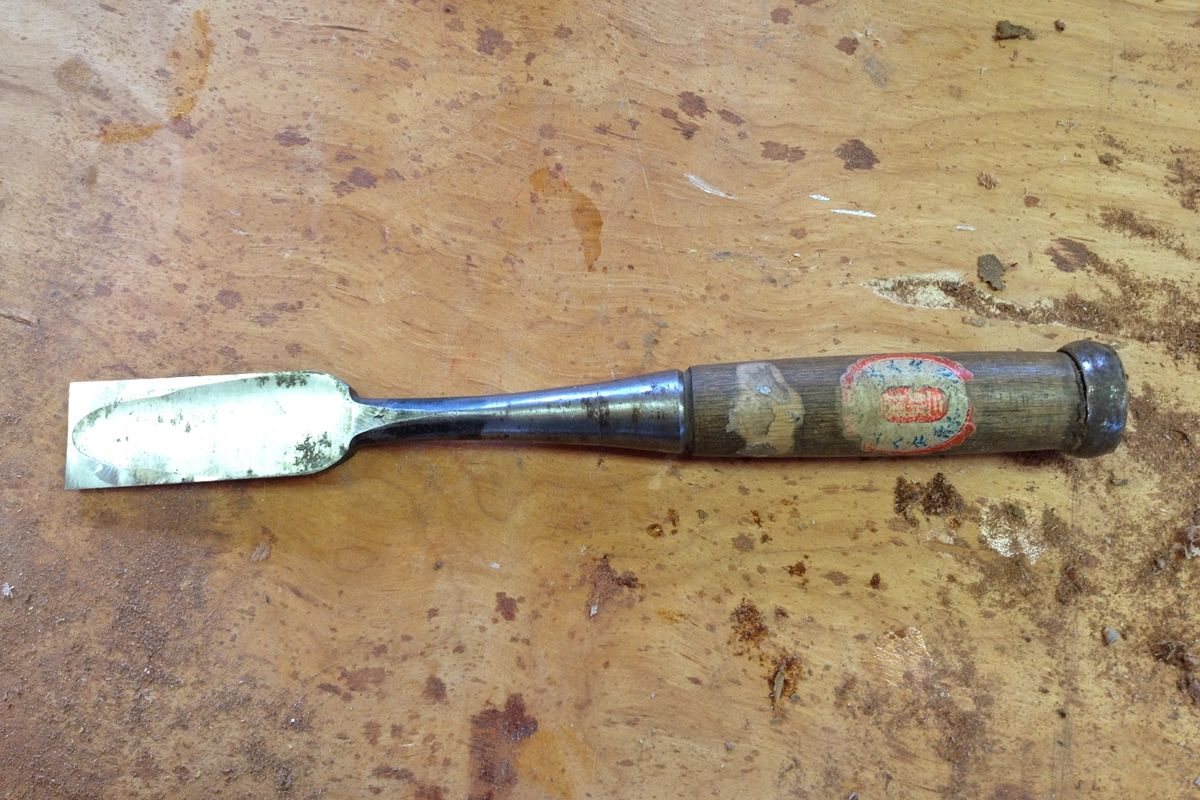
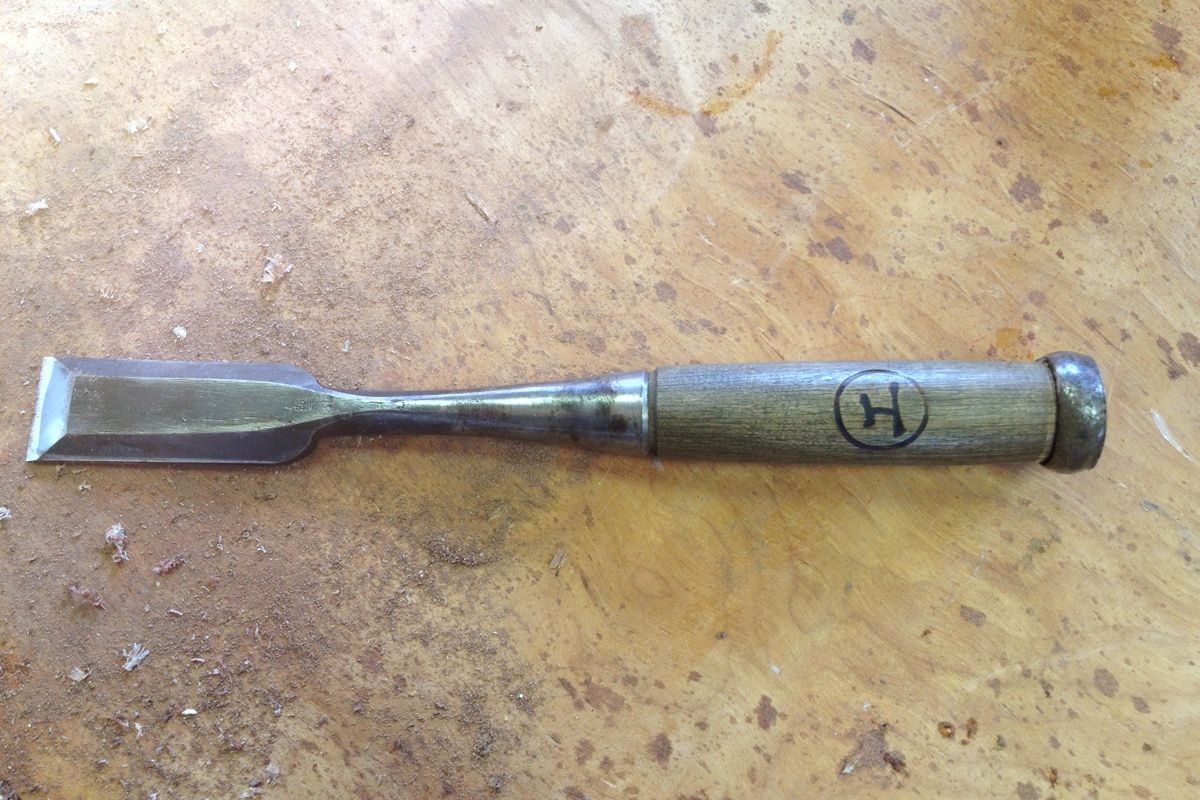

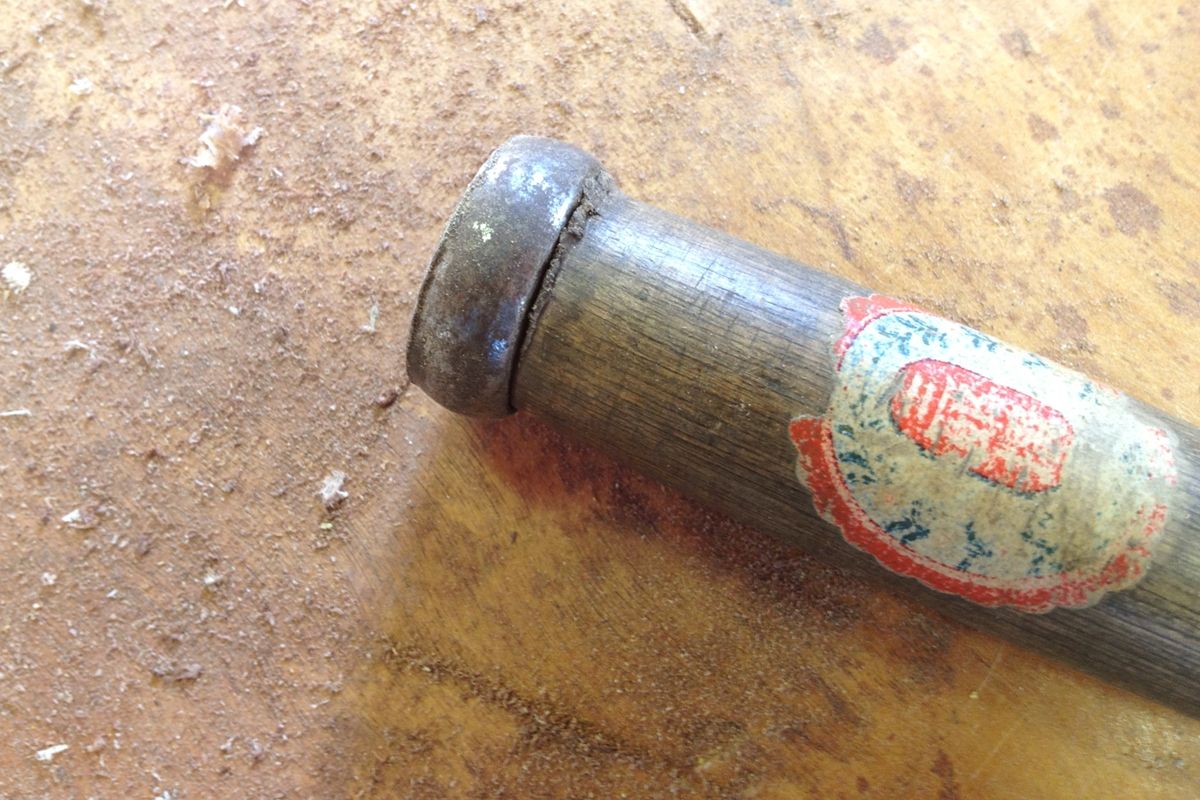
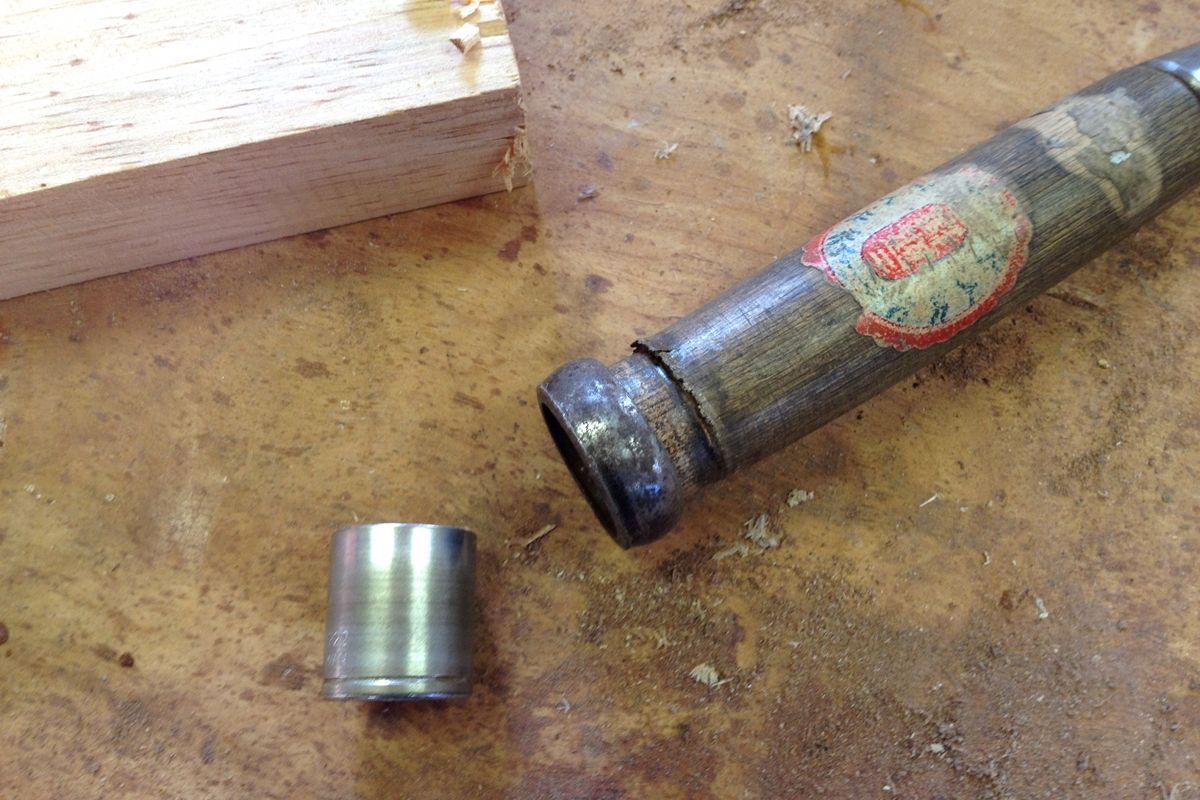
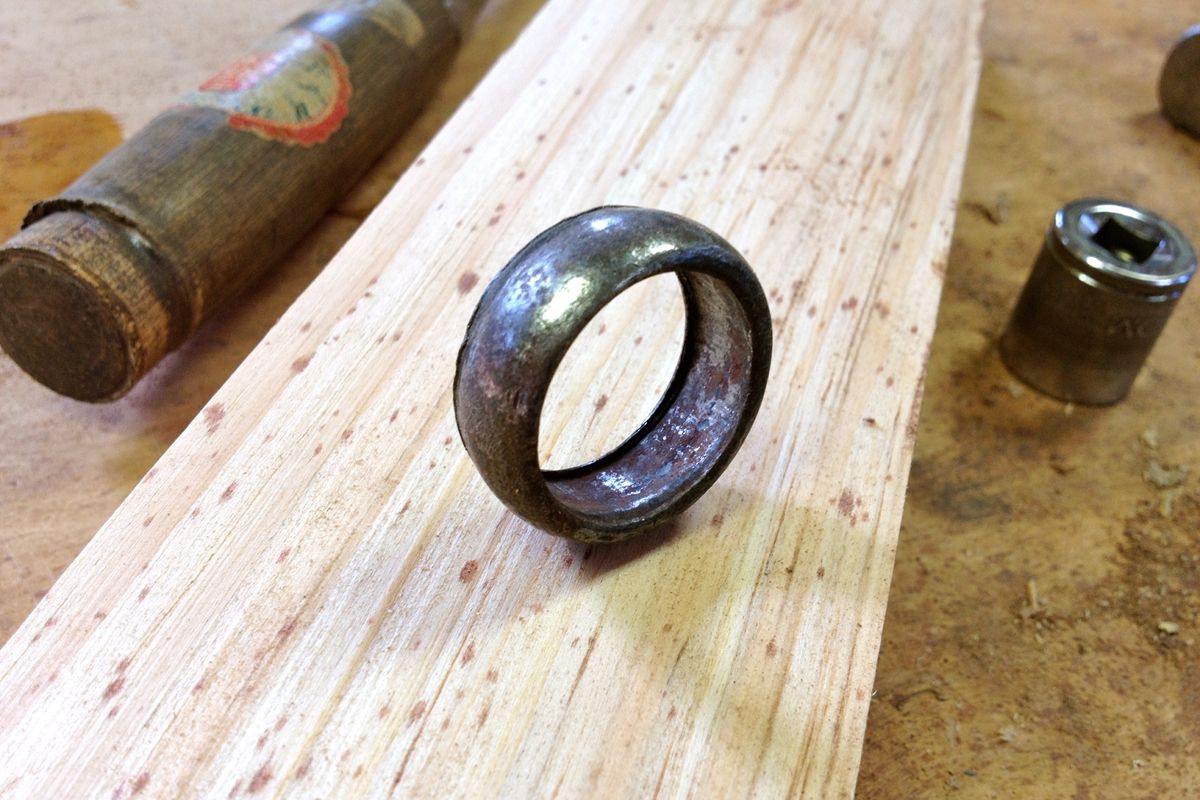
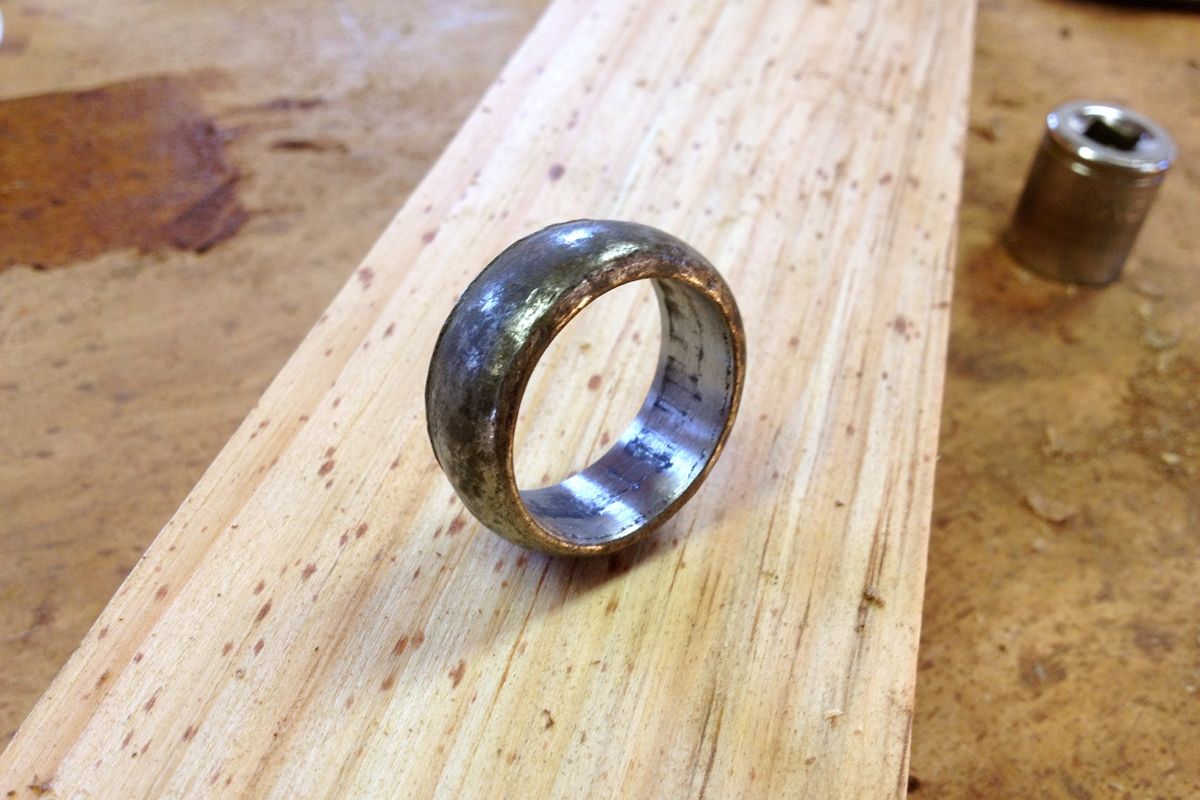

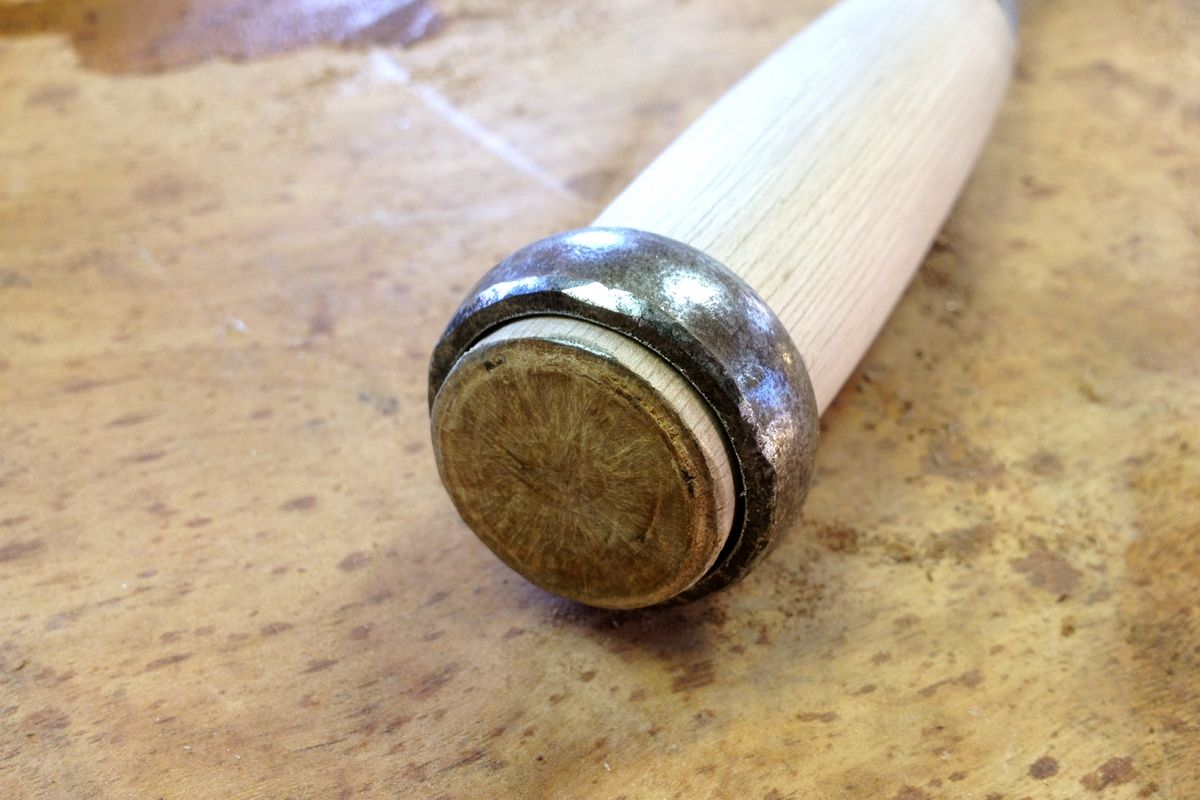
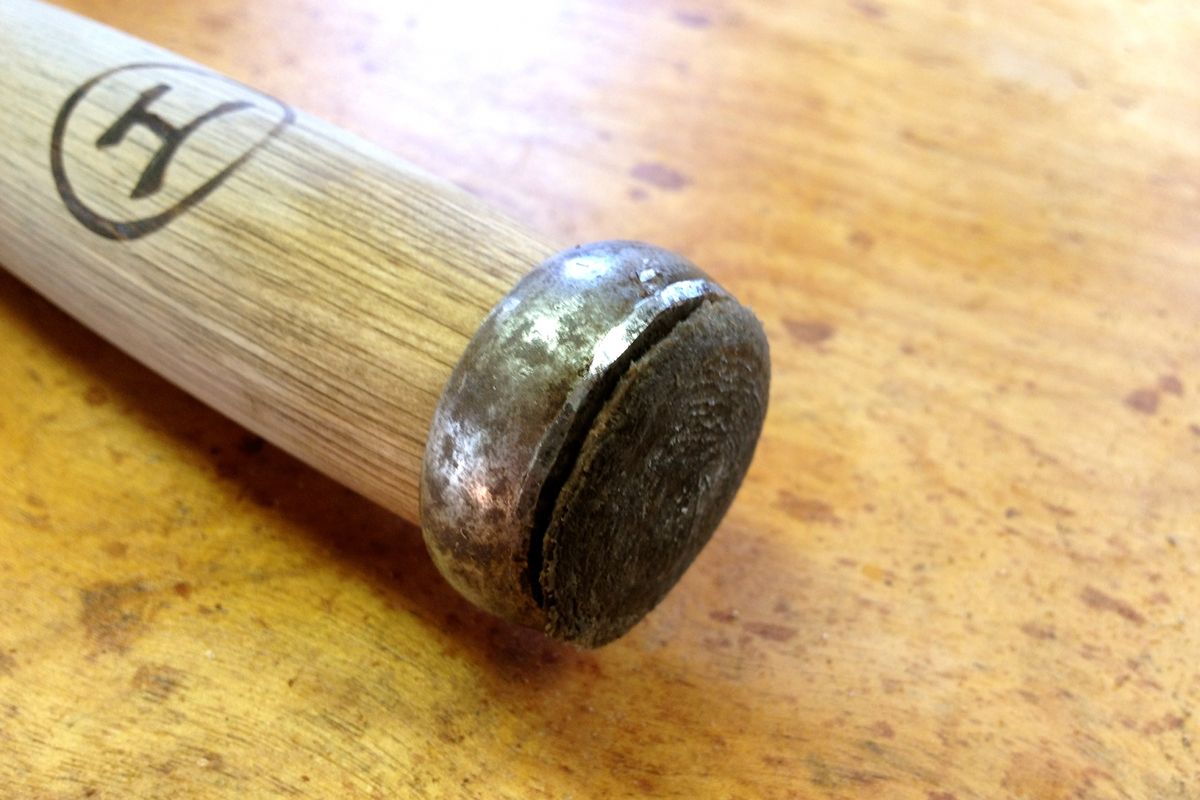
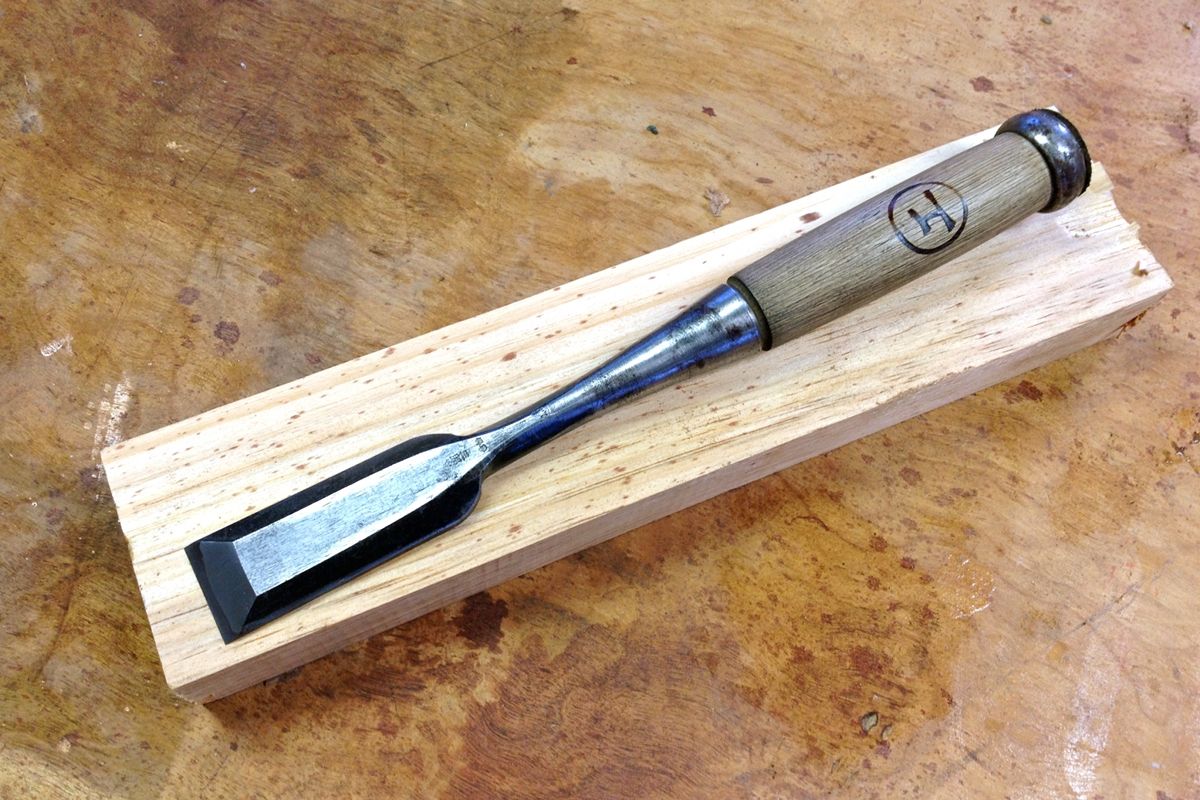






Comments
Wow, what a treasure. ラッキー犬
Fantastic story. My neighbor a young Japanese lady stopped by yesterday to talk about trimming back my very large Redwood tree that hovered over her yard. While she was telling me about the redwood debris she noticed the Japanese tools in my shop and started to translate the Japanese writings on the tool holders. Both of us were very pleased, her seeing me use tools from her homeland and me getting to understand where these tools came from and to better appreciate the quality of there construction.
Log in or create an account to post a comment.
Sign up Log in